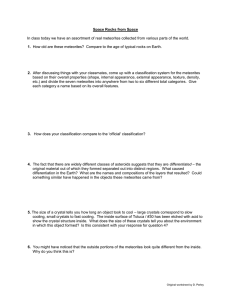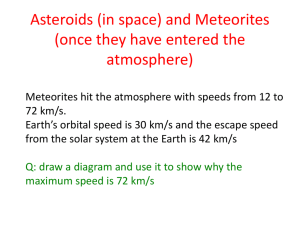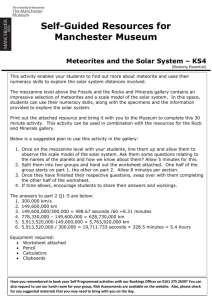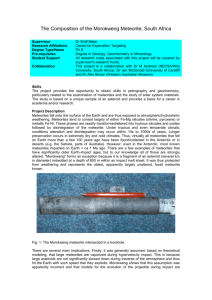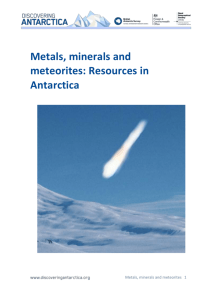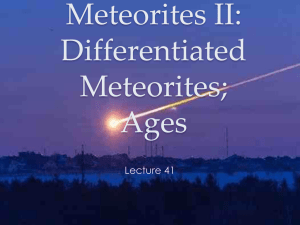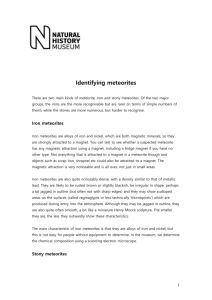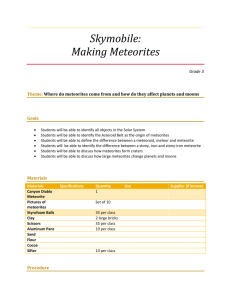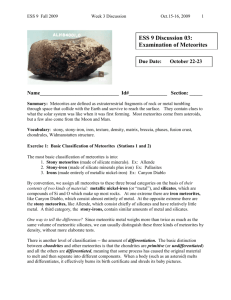Iron Meteorites
advertisement
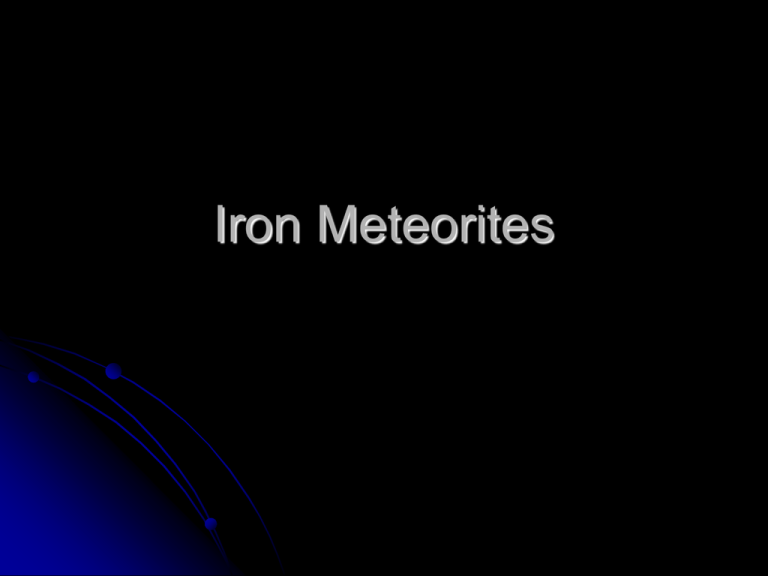
Iron Meteorites Introduction to the wonderful world of Iron Meteorites What do we know? Earth’s core is made of Fe So asteroids must have formed cores Indirect evidence: HED meteorites - no metal, but…segregated? Meteorites that contain no metal but show evidence of presence of metal Relationship between achondrites and iron meteorites Differentiated asteroids also have achondrites “-Philes” Various elements like to partition themselves: Siderophiles – affinity for metal Chalcophile – affinity for sulfides Lithophile – rock (silicate o oxide) I <3 metal Core formation scavenges siderophile elements IE: Iron, nickel, platinum, cobalt etc Achondritic meteorites derived by partial melting must be depleted of the siderophile elements in mantle Siderophile elements make up most of iron meteorites Crystallization of Irons Liquid film as opposed to molten beads sinking Evidence: loss of metal sulfides Process: Forms kamacite or taenite Depends on weight percent and temperature Widmanstatten pattern Fe/Ni rich minerals Widmanstatten pattern Structural Classification •Hexahedrites: Neumann lines, striations, all kamacite, mostly featureless •Octahedrites: 6-17% Ni, Kamacite and taenite, Widmanstatten Om, Of pattern, Largest y most diverse = Ogg, Og, and Off groups •Ataxites: microscopic Widmanstatten pattern, mostly teanite •Anomalous: usually fine grained, cm sized crystals Hexahedrites Octahedrites Ataxite and Anomalous Chemical Classification Separated by groups I-IV Subgroups Belong to a limited range of structural classes Correlation b/t band width and chemical grouping, etc Chemical v. Structural Classification Solidification of Cores Variable because of process of solidification to form cores Certain elements increase while others decrease Trends can be used to ID types of iron meteorites From fractional crystallization: solid separates from liquid Problem: localized differentiation Loose ends Variation of Widmanstatten pattern widths : phase diagram Silicate Inclusions – impacts o incomplete melting? Isochrones: Use radioactive elements to date iron meteorites Pallasites The Prettiest of Them All Stony-irons Composed of olivine crystals enclosed in metal Attractive :-D Olivine tends to be Mg rich Extension if IIIAB Eagle Station (KY) meteorite Iron-rich olivines, metals w/ composition unlike other groups, differing oxygen isotope compositions Pallasites Mesosiderites ‘messys’ - accidents 1:1 ratio of metals and silicates Mostly pyroxene and plagioclase No olivine Similar to HEDs Limited range of abundances From 2 differentiated asteroids colliding? Messys The End For more coloured meteorites: http://www.meteorites.com.au/home.html
